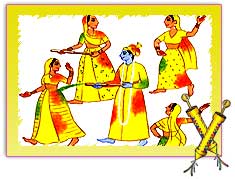On February 27, 2009 Ministry of Coal has awarded 2 coal blocks in Orissa for CTL projects to SETCL and JSPL. The IMG (Inter Ministerial Group) has however selected these two bidders taking all the criteria but has never given any clear order of preference.
Of late, Govt wanted to award these coal blocks on the basis of profit sharing and has sought legal advice from the law ministry. The law ministry clearly said that these criteria can not be a part of the contract document as this is proposed after the last date of application. Though the govt asked for profit sharing clause later at a stage of making presentation before the IMG, the law ministry advised the Ministry of coal to call for fresh proposals if it wants to introduce profit sharing as one of the clause for coal block allocation.
But, calling for fresh proposal would have definitely taken some time and fresh controversies would have been surfaced .Looking at these issues, Govt did not prefer to have fresh bidding on CTL.
Before awarding CTL blocks, Govt did have some options.
a. One of the options was to hold back on CTL allocation as the economics do not favour a CTL coal block allocation at this juncture. The world economy is passing through a phrase of slow down and the oil is well below the price of economic production of oil from CTL projects ( around $80 as predicted by the experts).The other concern is that if the project is delayed and the amendments to MMDR act is passed in favour of competitive bidding of the coal blocks , then the whole exercise will have been repeated .
b. The second option was that one party can be allocated coal block for development. As IMG has not set any preference, it is argued that the other party might raise some concerns about the allocation. Single allocation in favour of a party could have been made after a consensus from the competent authority.
c. The third option was to allocate two blocks to two short listed parties as their first choice differs from each other. . SETSL have indicated their first preference for the North of Arkhapal-Srirampur block, whereas JSPL have indicated their first preference for the Ramchandi Promotional block.
d. The last option was to return the proposal to IMG for a further fine tuning of parties so as to make a final decision on allocation of one coal block to one party. It would have taken some more time but could have been the right solution .
But the government took the third option to allocate two coal blocks to two parties.
It raises serious concerns on the part of the government. The timing of the decision (when the elections are only 2 months far away) and the basis of allocation. As everyone knows that CTL project is at a very nascent stage of development and the technology is not well established besides few successful demonstrations in
Though government has made strict provisions that coal from the project will be used strictly for CTL and can not be diverted, but then the decision to allocate the coal blocks certainly comes under scrutiny.
No doubt, the project developers have to bear all risks involved but when it is explicitly mentioned that one coal block will be allocated to one project developer, to award 2 coal blocks is not a wise decision. As the resources are limited, the country needs to take right decision at the right time but the decision to allocate these coal blocks in a hurry significantly points towards some under the carpet theory which could not be ignored.












